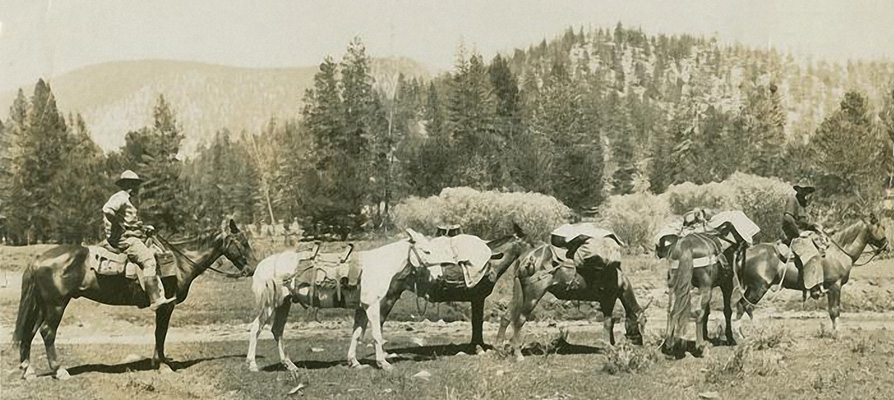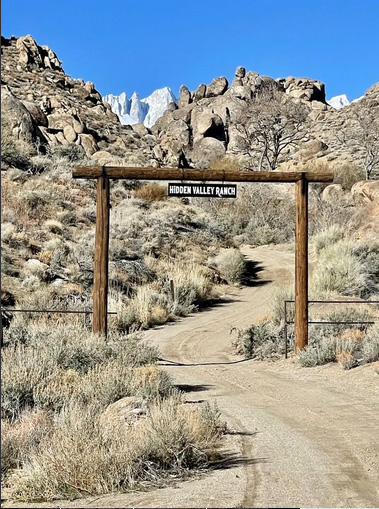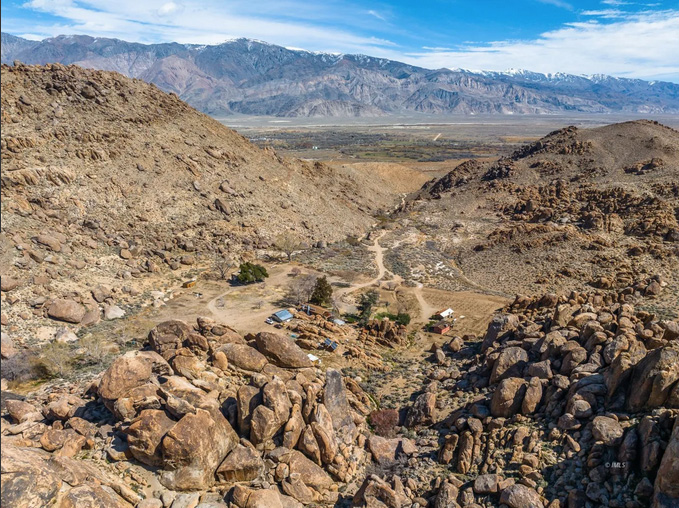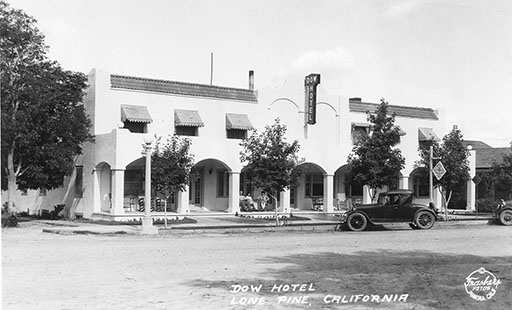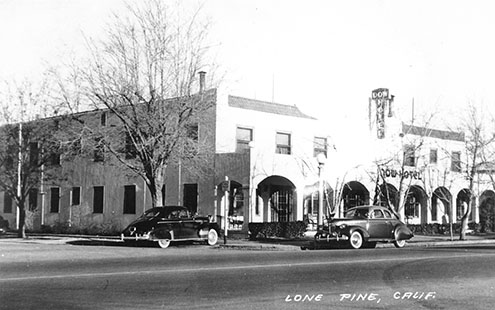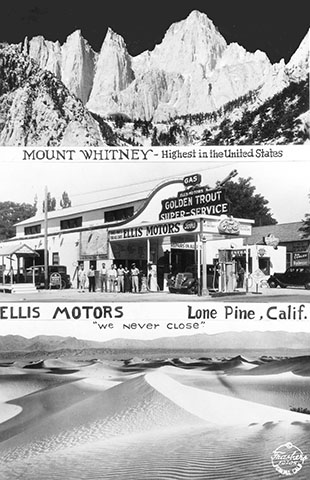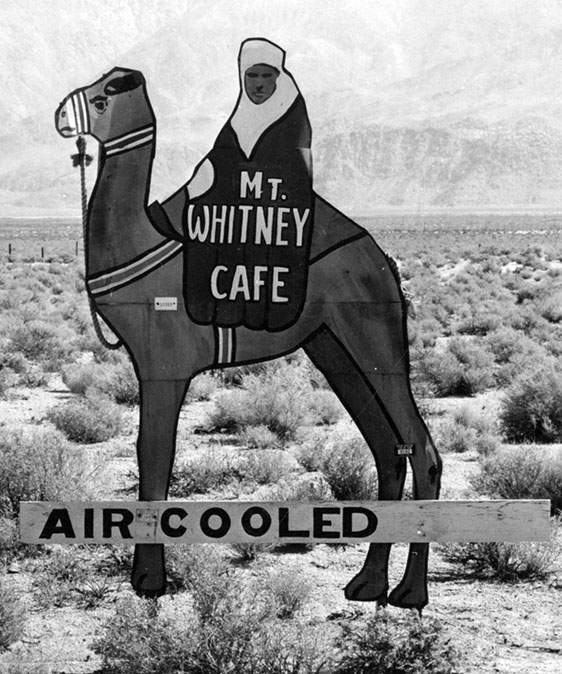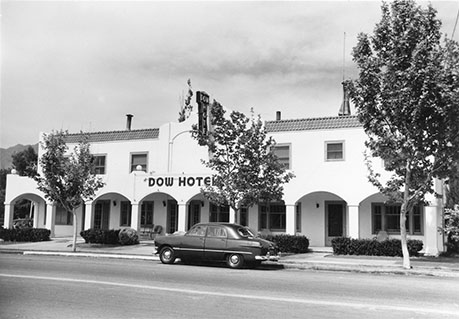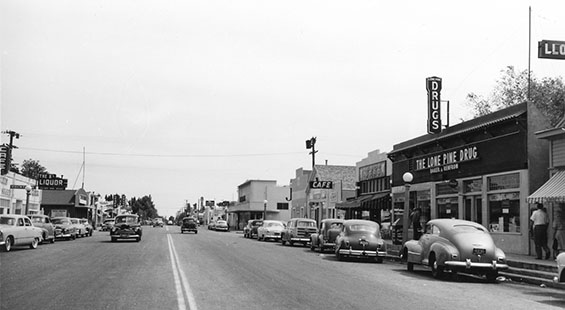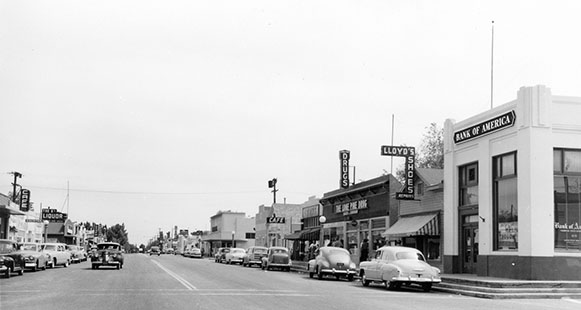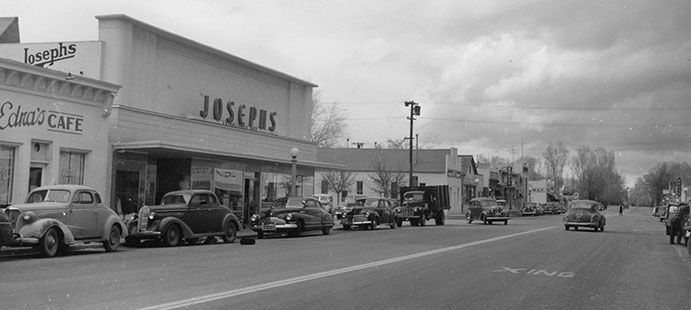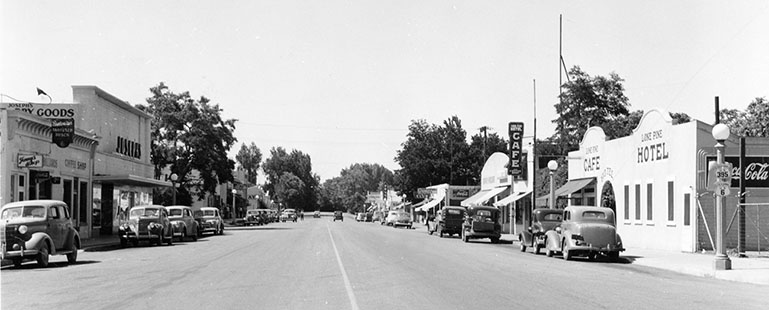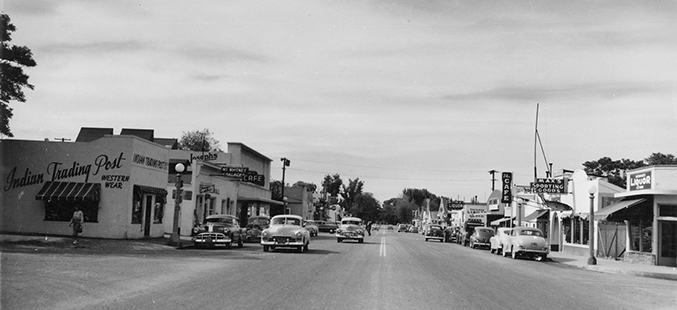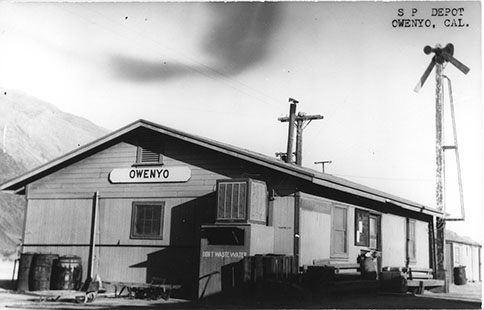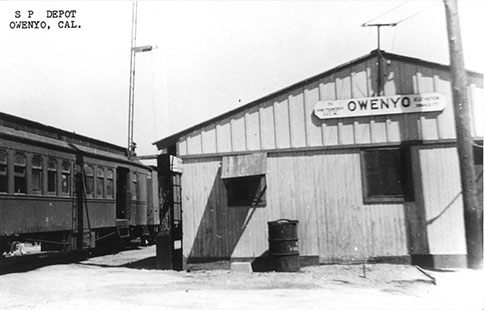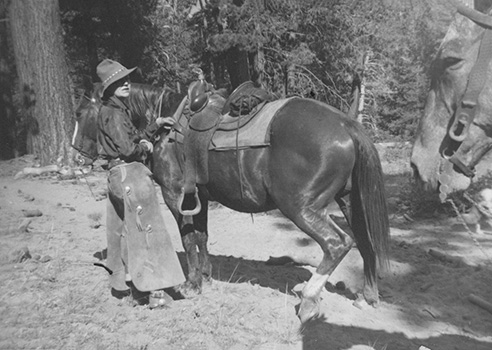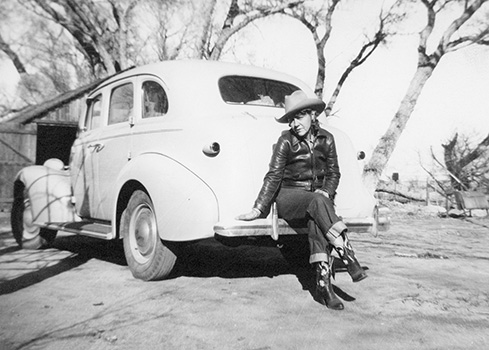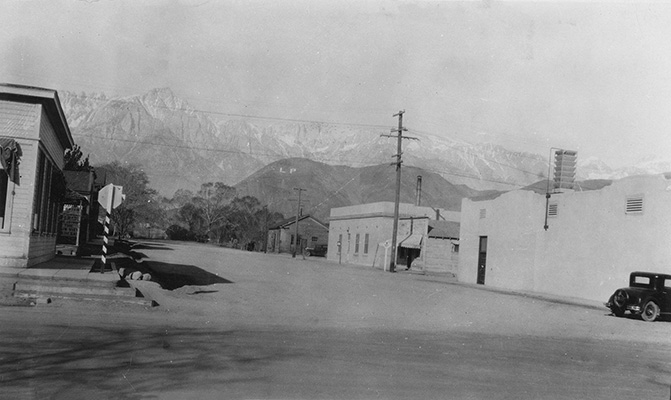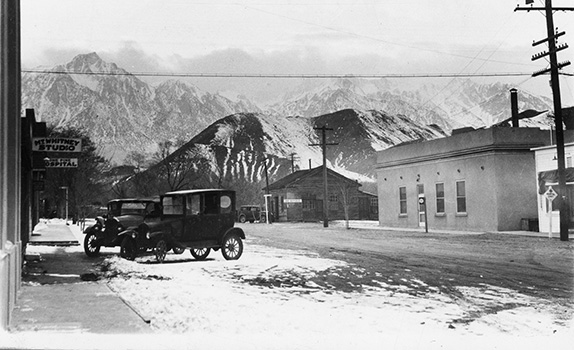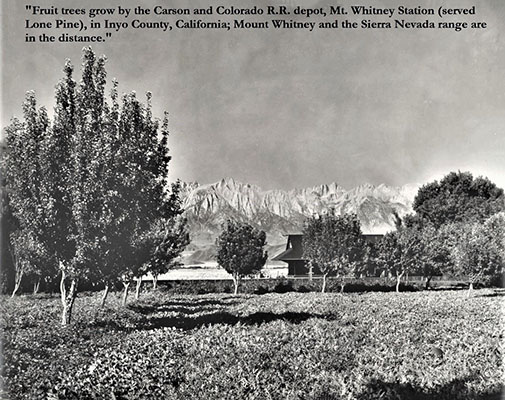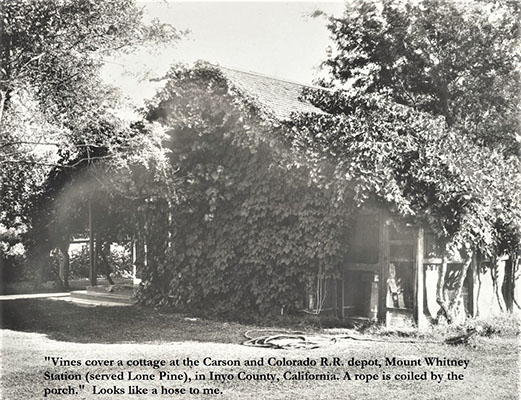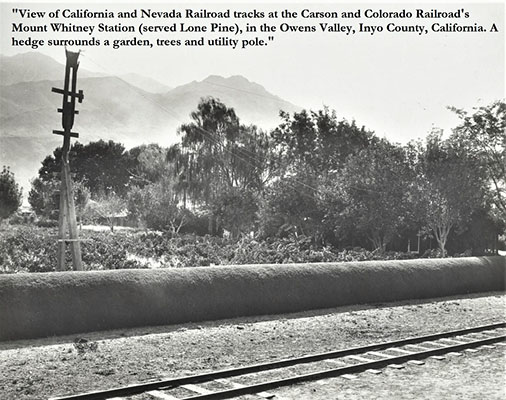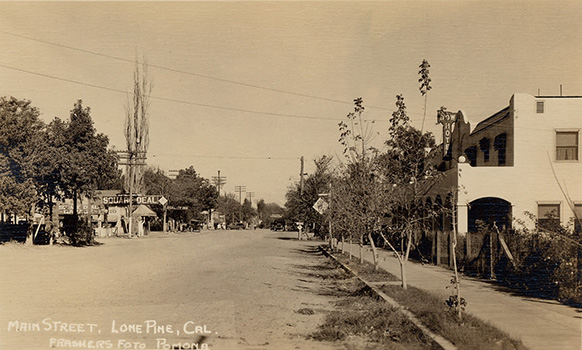|
|
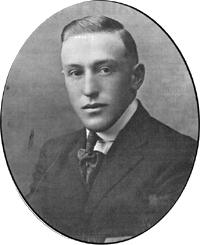 |
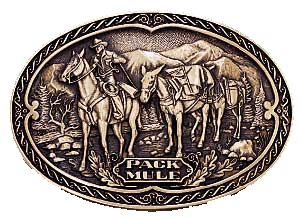
John H. Lubken
- A Lone Pine Pioneer |
All
black & white photos and history of John Lubken taken from
the April 1983 edition of "The Album."
[courtesy
of Rich McCutchan]
[photos by Bettie Halamicek, text by Jane Fisher]
See USE NOTICE on Home Page
|

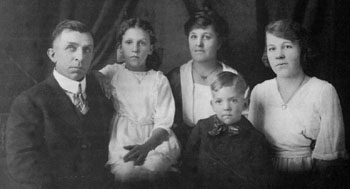
L to R: John
Lubken, Henrietta, Marie Lenore (Hollengren) Lubken, John August,
Bernice (circa 1920)
|
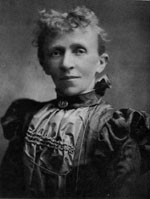
Augusta Marie
Roeper Lubken
(John's mother" |
John
Lubken, Inyo Country Supervisor and rancher was born on May 5th
in 1876 in Lone Pine. He was the son of John Frederick and Augusta
Marie Roeper Lubken. He married Marie Lenore Hollengren on June
17th 1902 and the two Owens Valley residents had three children:
Bernice (July 9th, 1903), Henrietta Crist (December 31st, 1911),
and John August (April 18th, 1917).
"My mother [John writes] came from near Berlin, Germany
to Placerville in 1866. She came to this valley in 1869,"
Lubken wrote for the pioneer family publication Saaa of Inyo
County. "My father came to the valley in 1862. He came to
New York from Germany and then went on to Australia during the
gold boom. He came back to New York then by way of the Isthmus
of Panama to this valley. That was long before the Panama Canal
was built. He married my mother in 1875 when she was 19."
"My father homesteaded on George's Creek, then traded the
homestead for a share of the Lone Pine Brewery, built by Louis
Munsinger before the earthquake of 1872. John Myers, known as
Hans Myers, bought Louis out and eventually my father traded
his ranch for Myers interest and owned the whole thing. The malt
mill in back of the brewery was a horse drawn mill. The horse
would keep going as long as the barley hopper was full. Lone
Pine Beer tasted a lot like Miller's High Life; it was the same
kind of beer. When it got so he couldn't make a profit and he
stopped brewing in 1894. After my father died, my mother sold
the brewery to Skinner, who tore down the building." |
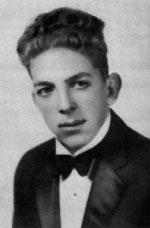
John Lubken
(1897) |
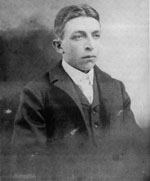
John Lubken
(1902) |
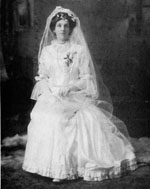
Marie Lenore
Hollengren (1902) |

"John H. Lubken"
by Jane Fisher


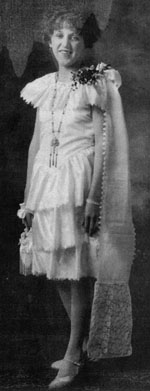
Henriettat Lubken
(16 yr in 1927) |
"I
started milking cows when I was nine years old. I never tasted
ice cream until I was about sixteen years old. I had one dish
at Levi's in Independence and didn't have any more until I was
grown. I was set to work and that's all I did was work. I could
lift a 180 pound sack of potatoes onto a wagon when I was fifteen.
My father would go along with four or five kegs of beer and take
it up to Cerro Gordo. He made beer and every two days he would
take 240 gallons and send it all up to the miners. He made lots
of money. There were four saloons in Keeler and one at Swansea.
The farmers raised all kinds of vegetables, corn, potatoes, barley,
and wheat. There was the Bell Mill on Oak Creek and another on
Bishop Creek run by Kilpatricks. They made the flour and the
housewives made the bread. There was an old bakery in Lone Pine
that made bread in big pans, like milk pans, and sold it for
25 cents a loaf. When I was only ten, my Grandmama, my brother,
and I would sell vegetables. My brother died when he was thirteen.
They also raised a lot of draft horses here. They were heavy
horses that could pull, weighing sixteen to eighteen hundred
pounds. They hitched 18 to 20 of them to the big stake bed wagons
and hauled groceries to Mojave. It took from eight to ten days
to make the trip.
People decided to run a boat across Owens Lake to help get the
lumber from the mill high up in Cottonwood Canyon. They made
lumber there and sent it down in a flume. Sometimes it would
get stuck in the flume and stack high up in the air, and they
would have to call the mill to shut off the water so they would
fix it up again. Down at Owens Lake where the creek comes in,
there was a dock running out in the lake to deep water. They
would transfer the lumber to the boat and take it to Swansea.
Swansea was then a thriving town, something like Lone Pine, with
people scattered all along there. There was a pier coming from
Swansea running far out into the lake, From there the lumber
was taken to Cerro Gordo.
Cerro Gordo was a big mine, rich in silver and lead, with a lot
of men, mostly Cornishmen. I have seen gold stacked high on the
tables where they were gambling. They would play until one of
the men won all the stack or until dark, sometimes all night.
There were six stores in Lone Pine and three in Independence.
There were two in Keeler, owned by men who sold and traded dynamite.
There were two mercantile stores in Darwin, and one saloon. John
Burkhardt was a watchmaker in Lone Pine, and Bill Vaughn was
a tailor. Shoemaker Pete made shoes and boots. I remember him
making my father seven pairs of boots; he was the only who could
fit him. After Pete died, my father got them in Independence
but they weren't so good." |
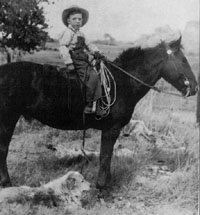
John Lubken |
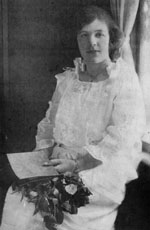
Bernice Lubken
(18 yr) |
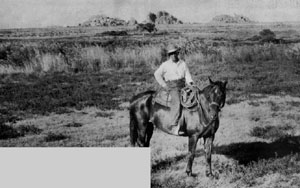
John Lubken
working his ranch in Lone Pine |

Here
are some pictures I took during a 2015 trip back up Lubken
Road.
[The
Pigmy Packer] |
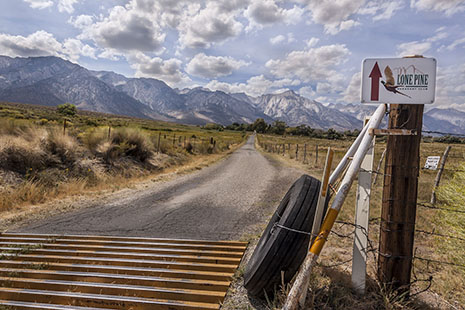
View east towards
the Eastern Crest of the Sierra after exiting Lubken Canyon |

Junction of
Lubken Canyon Road at Horseshoe Meadows Road.
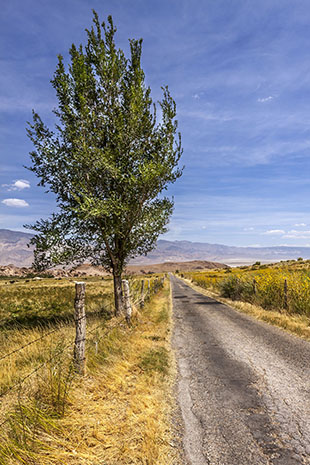
Looking back towards the Inyo Mountains
on Lubken Road
|
Lubken
Canyon Road
Lubken Canyon Road remains a favorite of mine. I spent many summer
days driving the length of the road from U.S. 395 west to the
Horseshoe Meadows road and Carrol Creek or north through the
Alabama Hills to the Whitney Portal Road. Every summer Mt. Whitney
Pack Trains would drive all of the stock from the Moffat Ranch,
located north of Movie Flats, in the Alabama Hills, and from
Whitney Portals down to the Elder Ranch/Corral, located on Lubken
Road just as it exits the western end of the canyon. There we
would shoe all of the stock in preparation for a summer of packing.
Later in the summer we would drive all of the burros from Moffat
ranch to the Elder for mane & tail trimming prior to being
shipped out for use on the Sierra Club Burro Trips. Both drives
were always a summer adventure since they involved 4 to 5 packers
on horseback putting in several hours in the saddle as we drove
the stock across 15 miles of sagebrush covered desert in and
out of the Alabama Hills. Those were wonderful times back in
the 1960s and '70s that none of use will ever forget. Tommy Jefferson
was true and trustworthy friend and boss who taught us, amongst
many things, about the care and value of good stock.
The Pigmy Packer |
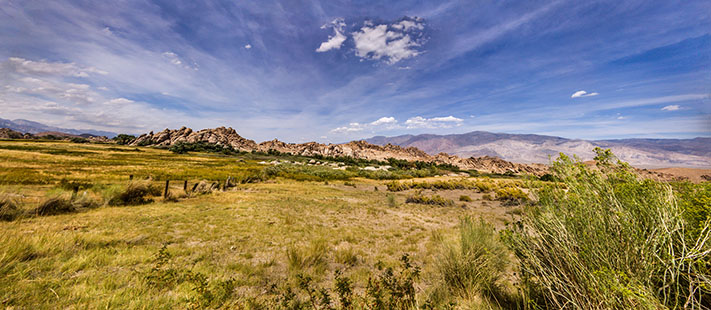 Looking north across Lubken Ranch and the Alabama Hills
Looking north across Lubken Ranch and the Alabama Hills |

All
photo cards courtesy of Rich McCutchan archives
unless otherwise noted.
|

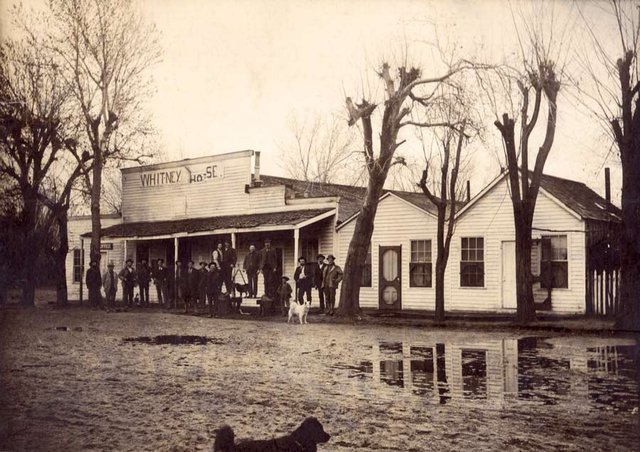 Lone Pine, CA. - 1905
Lone Pine, CA. - 1905 |


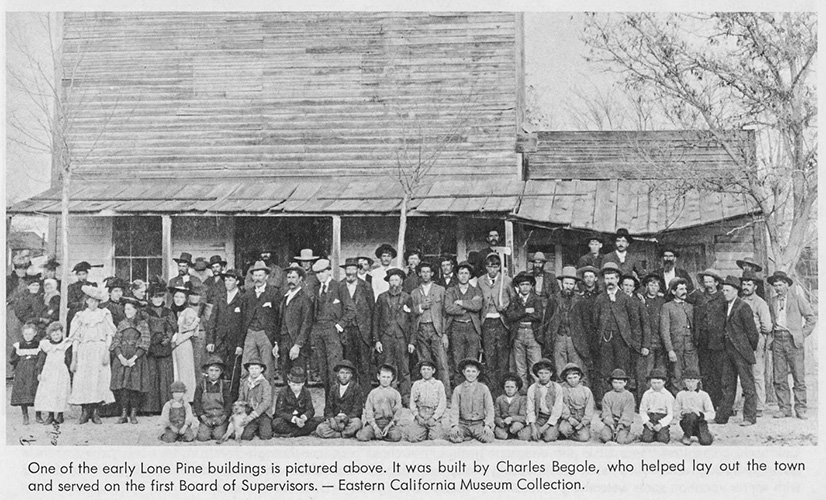 Photo courtesy "Inyo 1886 - 1986"
Photo courtesy "Inyo 1886 - 1986" |


 04/22 04/22
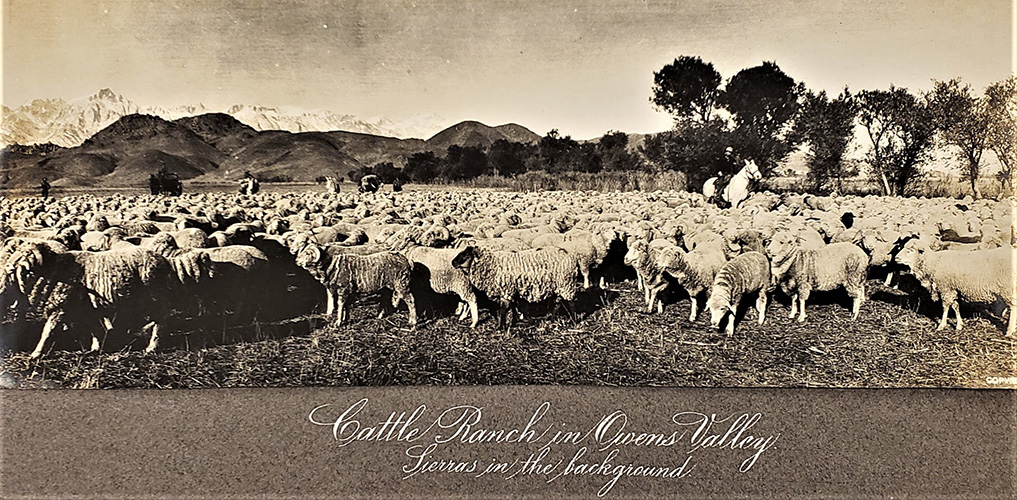 From an album in the Huntington Library. There were good talks at the ESIA yesterday. One by Robert Marks talked about how sheep by the many thousands displaced the pronghorn in the Mono Basin where there are ancient traps the indigenous folks built to herd them. One of my relatives Bill Corcoran tried sheep ranching south of Big Pine after making money at Bullfrog, but soon bored of it and went back to wandering the desert.
From an album in the Huntington Library. There were good talks at the ESIA yesterday. One by Robert Marks talked about how sheep by the many thousands displaced the pronghorn in the Mono Basin where there are ancient traps the indigenous folks built to herd them. One of my relatives Bill Corcoran tried sheep ranching south of Big Pine after making money at Bullfrog, but soon bored of it and went back to wandering the desert.
(Photo and text courtesy Hal Eaton) |

 03/25 03/25
Hidden Valley Ranch - Lone Pine, CA
(Photos courtesy of Compass Real Estate unless otherwise noted)
|
|
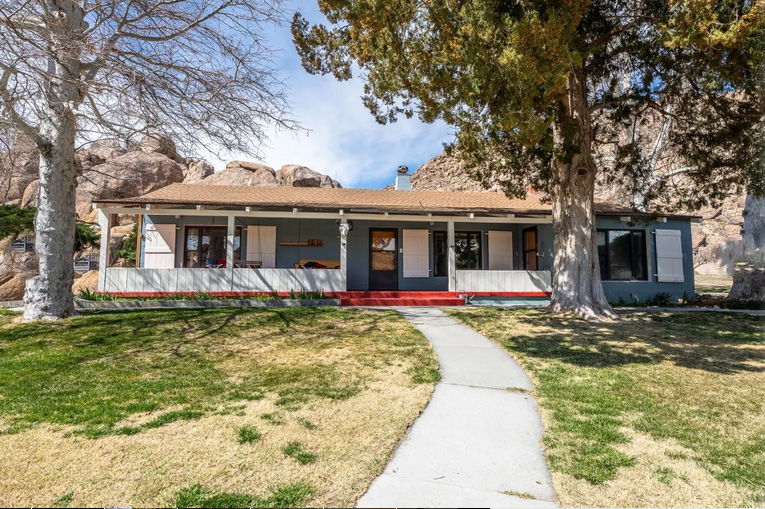 |
|
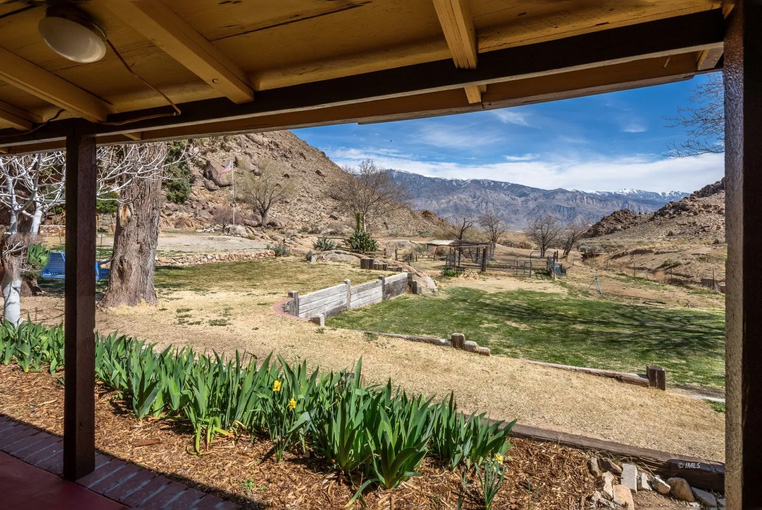 |
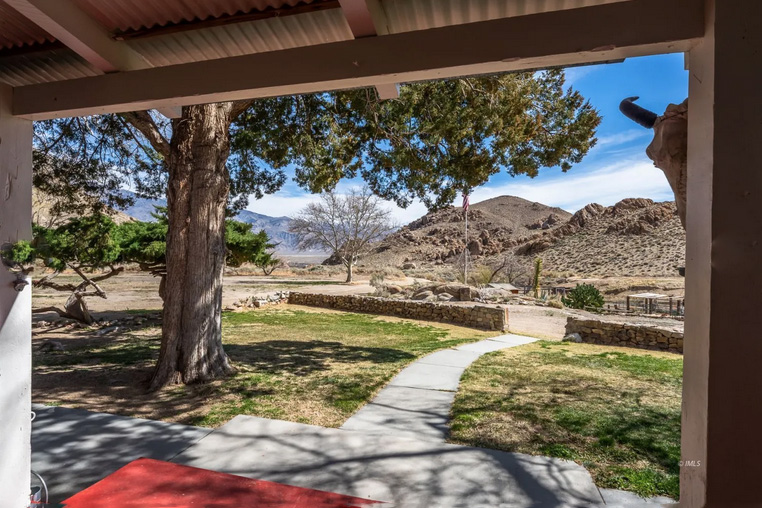 |
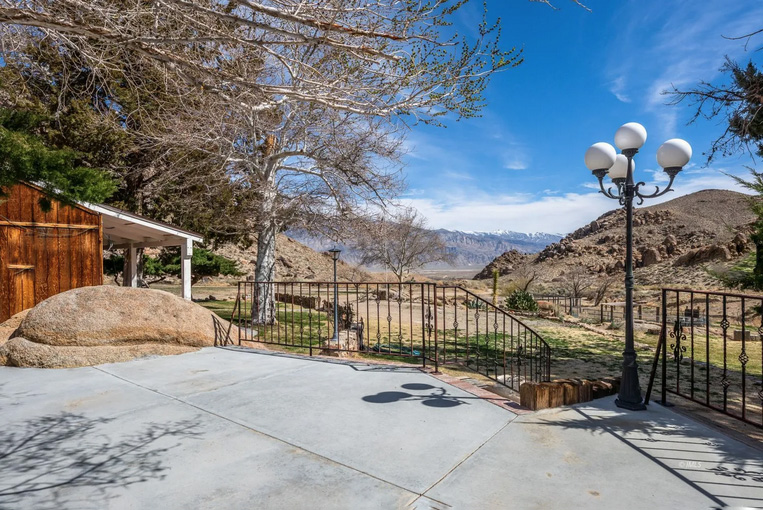 |
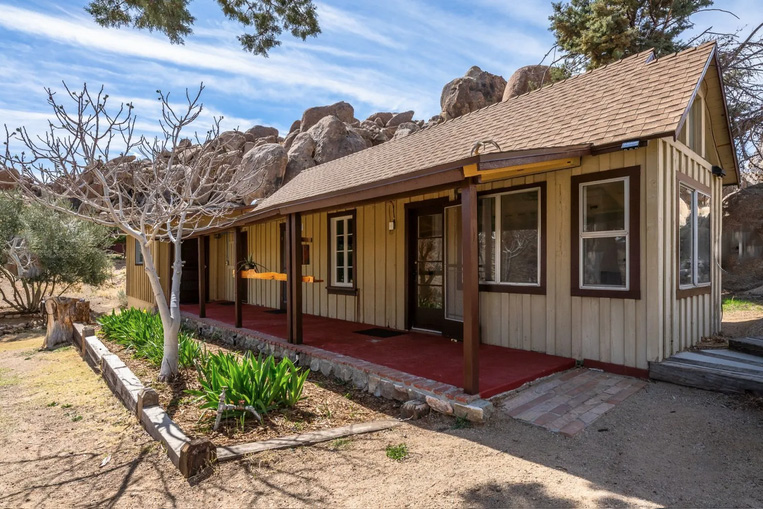 |
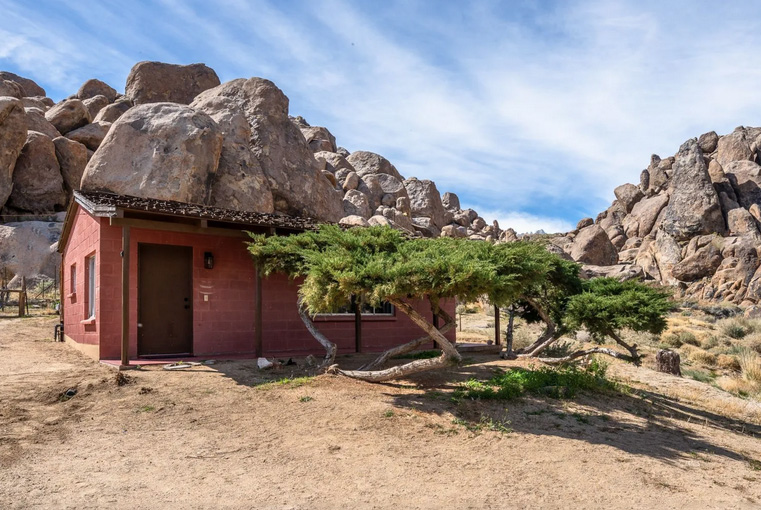 |
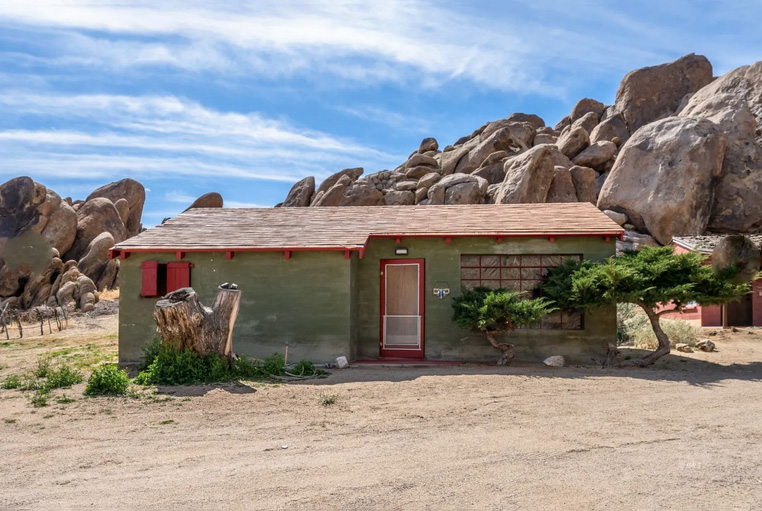 |
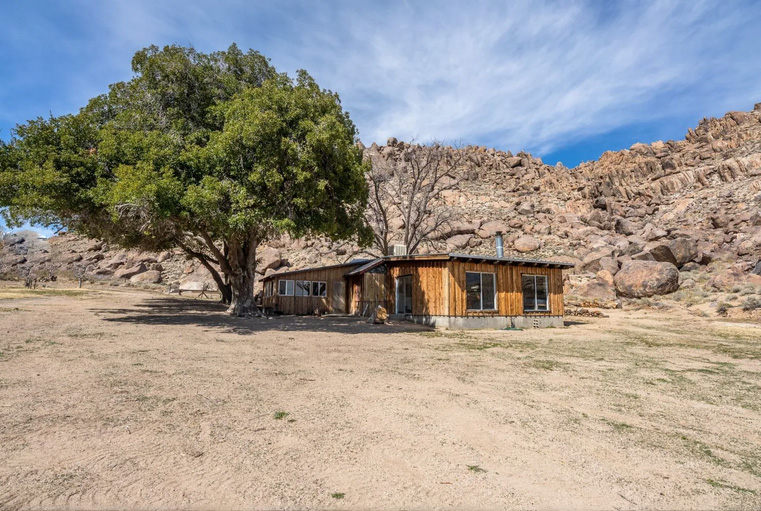 |
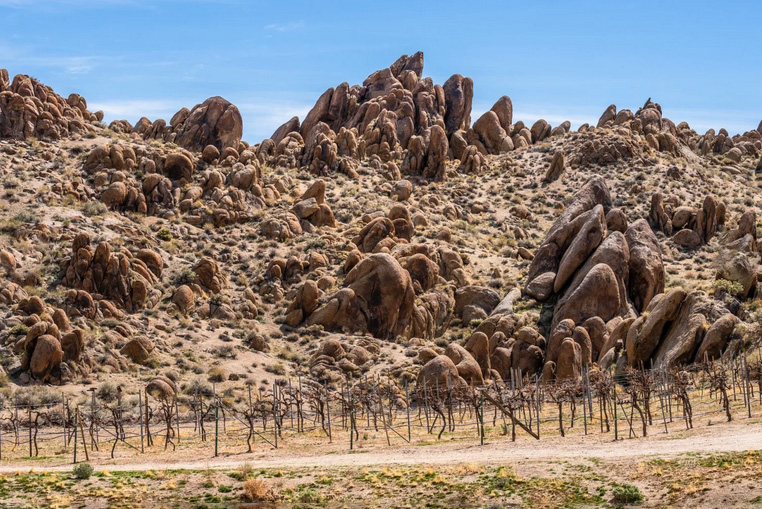 |
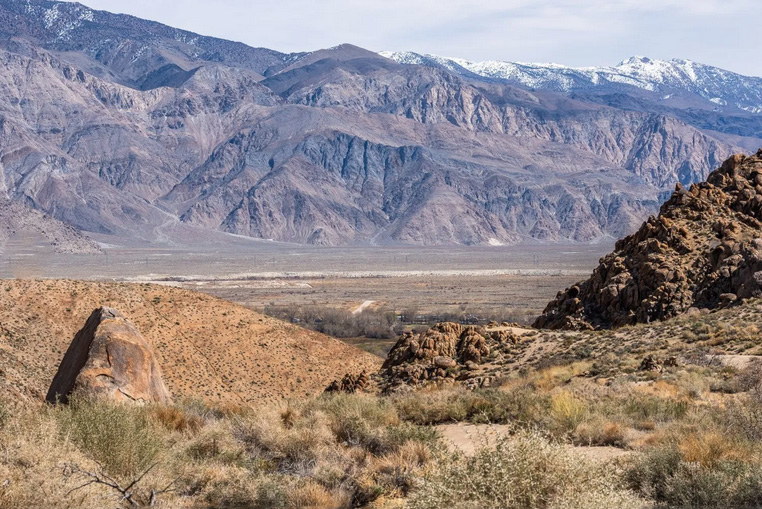 |
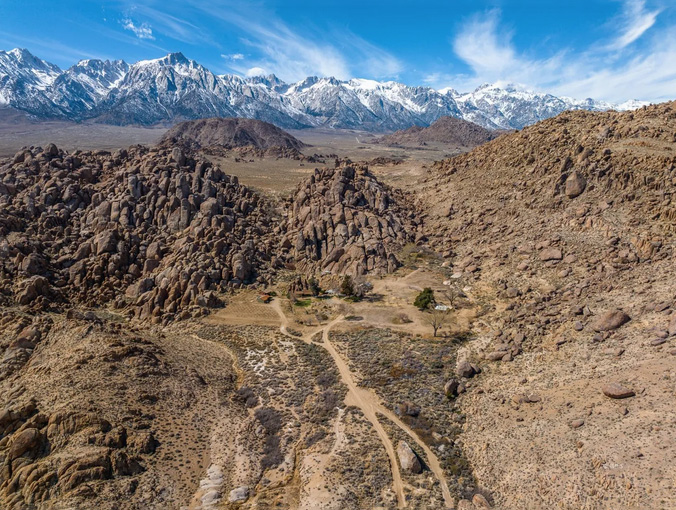 |
|
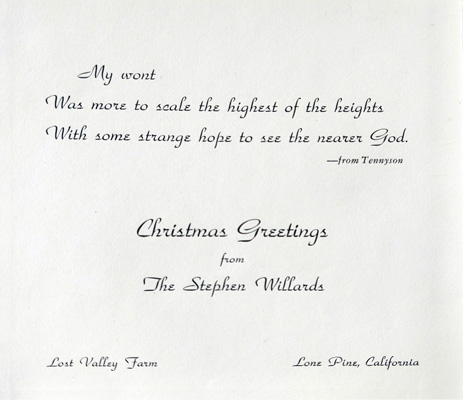 Photo courtesy of Rick Olson
Photo courtesy of Rick Olson
|
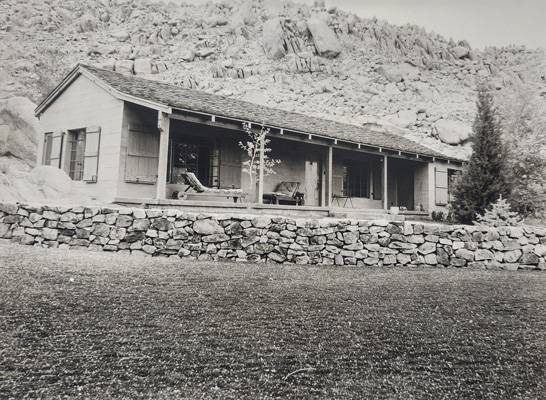 Stephen Willard's Lost Valley Farm
Stephen Willard's Lost Valley Farm
(
Photo courtesy of Rick Olson) |
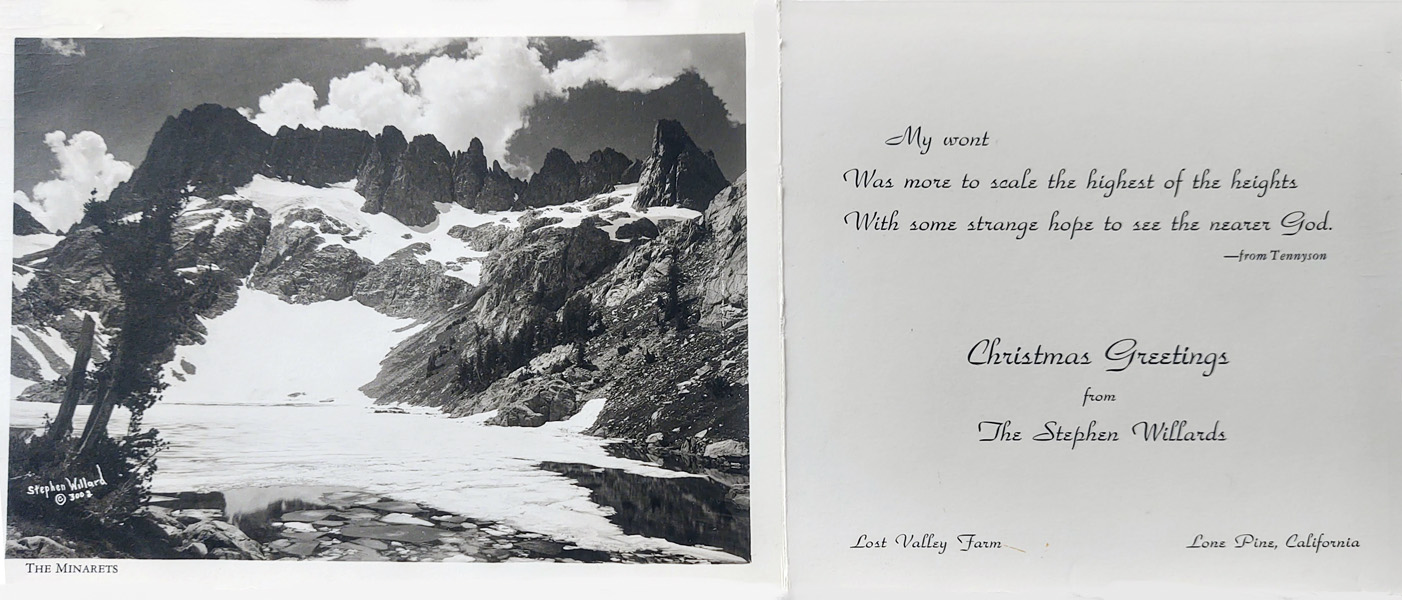 Stephen Willard's Christmas Card
Stephen Willard's Christmas Card
(
Photo courtesy of Rick Olson) |
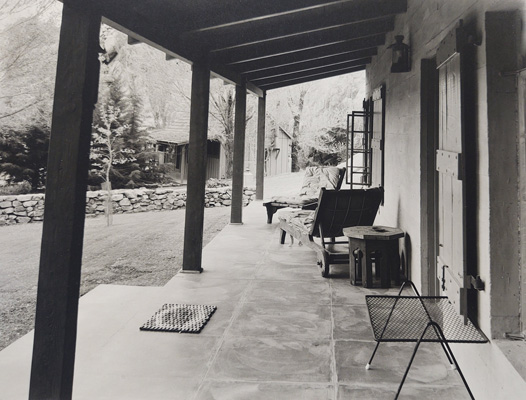 Stephen Willard's Lost Valley Farm
Stephen Willard's Lost Valley Farm
(
Photo courtesy of Rick Olson) |
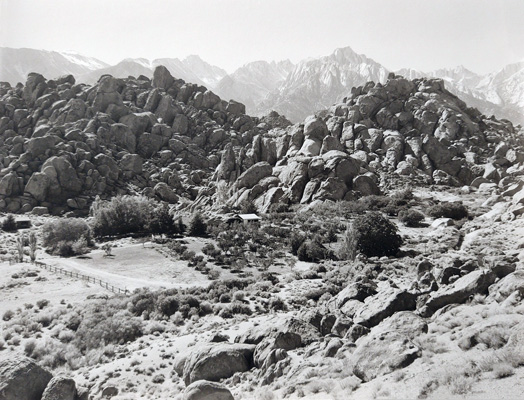 Stephen Willard's Lost Valley Farm
Stephen Willard's Lost Valley Farm
(
Photo courtesy of Rick Olson) |

|



